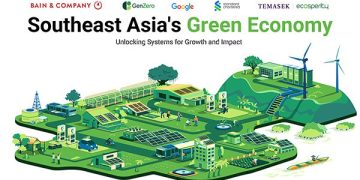As governments worldwide roll out new rounds of macroeconomic policies aimed at stabilizing growth, curbing inflation, and steering structural reforms, the ripple effects across industries are becoming increasingly apparent. These policies are not just about adjusting interest rates or fiscal stimulus—they often signal deeper shifts in regulatory focus, investment priorities, and strategic sectors that will define the next phase of economic development.
But which industry giants stand to be reshaped, challenged, or empowered by the latest wave of macro policy implementation? This article explores the key sectors likely to experience transformation and highlights the companies poised to either lead or struggle amid this evolving landscape.
1. Energy Sector: Accelerating the Green Transition
Many governments have doubled down on climate commitments through policies promoting renewable energy, energy efficiency, and carbon neutrality. Subsidies, carbon pricing, and stricter environmental regulations are reshaping the traditional energy landscape.
Industry leaders impacted: Traditional oil and gas majors face pressure to pivot aggressively toward renewables and cleaner technologies. Meanwhile, companies specializing in solar, wind, battery technology, and hydrogen production are poised for rapid growth.
For example, firms investing heavily in clean energy infrastructure and innovation will likely emerge as the new powerhouses, while those clinging to fossil fuel dependency may face margin squeezes and regulatory hurdles.
2. Technology Sector: From Innovation to Regulation
Macroeconomic policies now increasingly intersect with technology, especially around data governance, cybersecurity, and antitrust concerns. Governments are emphasizing digital sovereignty, privacy protection, and fostering domestic innovation.
Industry leaders impacted: Tech giants that dominate global markets may encounter tighter regulation but also new opportunities in government-led digital infrastructure projects and AI development initiatives.
Companies that can navigate regulatory landscapes while continuing to innovate in cloud computing, artificial intelligence, and semiconductor manufacturing will consolidate leadership. Conversely, those exposed to geopolitical trade restrictions may face operational challenges.
3. Financial Services: Navigating New Regulatory and Monetary Terrain
Central banks’ shifting monetary policies, coupled with regulatory reforms aimed at financial stability and consumer protection, are redefining banking, insurance, and capital markets.
Industry leaders impacted: Large banks and fintech firms are adapting to tighter compliance requirements, evolving interest rate environments, and increasing demand for sustainable finance products.
Institutions that invest in digital transformation, risk management, and ESG-aligned offerings will strengthen their market position. Conversely, players slow to adapt may lose ground to more agile competitors.
4. Manufacturing and Industrials: Embracing Resilience and Innovation
Policies encouraging supply chain diversification, onshoring, and technological upgrading are changing the industrial landscape. Support for automation, robotics, and advanced manufacturing technologies is accelerating.
Industry leaders impacted: Manufacturers investing in smart factories, supply chain resilience, and sustainability initiatives stand to gain competitive advantages.
Those heavily reliant on outdated processes or vulnerable to supply chain disruptions face risks of market share erosion. Leaders will be those who align swiftly with government priorities on innovation and sustainability.

5. Healthcare and Pharmaceuticals: Boosted by Policy and Innovation
In response to demographic shifts and public health priorities, macro policies are channeling more resources into healthcare infrastructure, drug development, and biotechnology.
Industry leaders impacted: Pharmaceutical companies and healthcare providers that leverage innovation in genomics, personalized medicine, and digital health platforms are positioned for accelerated growth.
Policy support for domestic production of critical medical supplies and R&D incentives will reshape competitive dynamics, rewarding companies with strong innovation pipelines and regulatory agility.
6. Consumer Goods and Retail: Adapting to Changing Demand and Sustainability Trends
Macroeconomic policies that influence disposable income, consumption patterns, and sustainability standards are affecting consumer sectors deeply.
Industry leaders impacted: Companies integrating sustainability into their product lines and supply chains are likely to capture growing environmentally conscious consumer bases.
Additionally, digitalization policies promoting e-commerce infrastructure support retailers embracing omni-channel strategies. Firms slow to innovate or adjust to regulatory standards risk losing relevance.
7. Infrastructure and Construction: Benefiting from Stimulus and Green Initiatives
Infrastructure investment is often a central pillar of macroeconomic policy packages, especially with an emphasis on green and smart infrastructure.
Industry leaders impacted: Construction and engineering firms specializing in sustainable urban development, renewable energy facilities, and smart city technologies are expected to benefit significantly.
This sector’s leaders will be those who can combine scale with innovation and compliance to capitalize on increased government spending.
Conclusion
The rollout of new macroeconomic policies is more than a backdrop—it is a catalyst reshaping the competitive landscape across multiple industries. Energy, technology, financial services, manufacturing, healthcare, consumer goods, and infrastructure sectors are all undergoing transformation driven by regulatory shifts, innovation incentives, and sustainability mandates.
Industry leaders that anticipate these changes, adapt their strategies, and invest in future-proof capabilities will emerge stronger and more influential. Conversely, companies resistant to change or slow to respond may find themselves displaced in a rapidly evolving market environment.
Staying ahead means closely monitoring policy developments, understanding sector-specific impacts, and being agile in execution—only then can investors and corporate leaders truly harness the opportunities embedded in the new macroeconomic era.



































